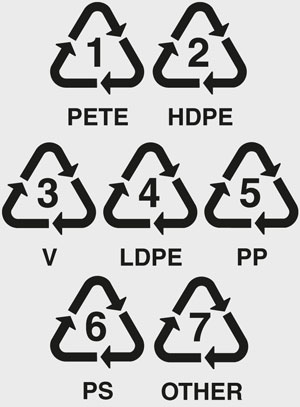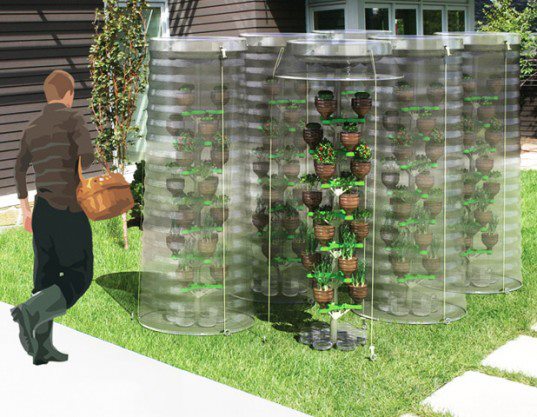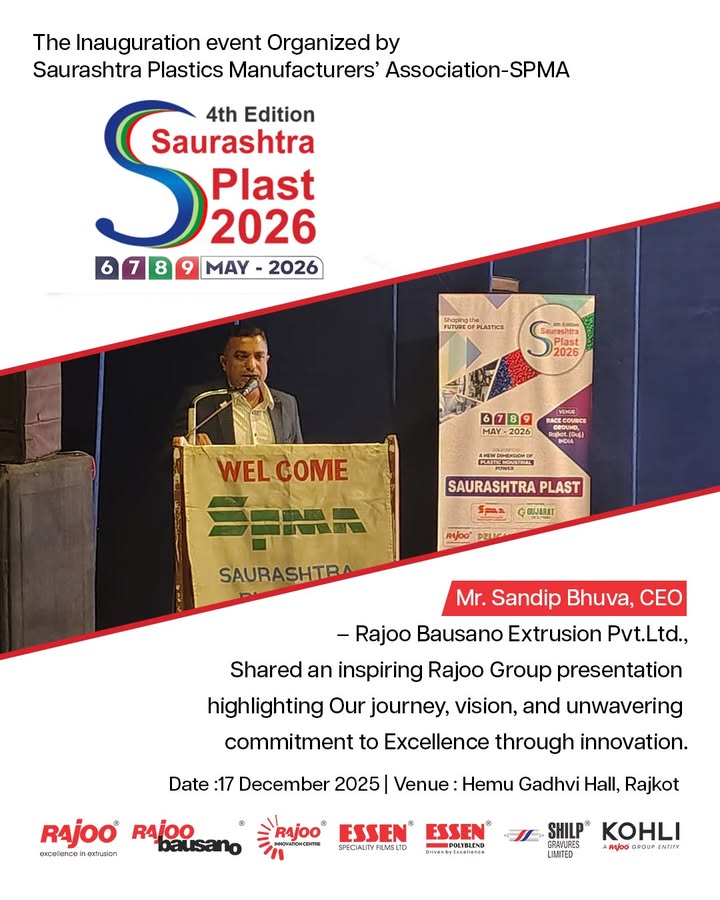The Seven Classifications of Plastics: Are They All Really Recycled?
Recycling Numbers: what do they mean?
The recycling symbol we’re familiar with, a single digit number surrounded by a triangle of arrows was designed by The Society of the Plastics Industry (SPI) in 1988 to allow consumers and recyclers to differentiate types of plastics while providing a uniform coding system for manufacturers.
The 7 designated polymer groups:
PETE: Polyethylene Terephthalate.
HDPE: High Density Polyethylene
V: Vinyl/Polyvinyl Chloride (PVC).
LDPE: Low Density Polyethylene.
PP: Polypropylene.
PS: Polystyrene.
Other mixed resins.
Some plastics are easy to recycle and some are not.
The easiest and most common plastics to recycle are made of polyethylene terephthalate (PETE) and are assigned the number 1. Examples include soda and water bottles, medicine containers, and many other common consumer product containers. Once it has been processed by a recycling facility, PETE can become fiberfill for winter coats, sleeping bags and life jackets. It can also be used to make bean bags, rope, car bumpers, tennis ball felt, combs, cassette tapes, sails for boats, furniture and, of course, other plastic bottles.
Number 2 is high-density polyethylene plastics. These include heavier containers that hold laundry detergents and bleaches as well as milk, shampoo and motor oil. Plastic labeled with the number 2 is often recycled into toys, piping, plastic lumber and rope. Like plastic designated number 1, it is widely accepted at recycling centers.
Some Less Commonly Recycled Plastics:-
Polyvinyl chloride, commonly used in plastic pipes, shower curtains, medical tubing, vinyl dashboards, and even some baby bottle nipples, gets number 3. Like numbers 4 (wrapping films, grocery and sandwich bags, and other containers made of low-density polyethylene) and 5 (polypropylene containers used in Tupperware, among other products), few municipal recycling centers accept these polymers due to the low rate of recyclability.
Hardest Plastics to Recycle:-
Items made from combinations of the various plastics or from unique plastic formulations not commonly used are difficult to recycle. These types of products are typically layered (for example multilayer barrier films) or mixed plastic products (like the hard and soft polymers used in toothbrushes). These types of products are imprinted with a number 7 or nothing at all and are seldom recycled and are placed in the regular waste streams (landfilled or incinerated).

The Seven Classifications of Plastics: Are They All Really Recycled?
Recycling Numbers: what do they mean?
The recycling symbol we’re familiar with, a single digit number surrounded by a triangle of arrows was designed by The Society of the Plastics Industry (SPI) in 1988 to allow consumers and recyclers to differentiate types of plastics while providing a uniform coding system for manufacturers.
The 7 designated polymer groups:
PETE: Polyethylene Terephthalate.
HDPE: High Density Polyethylene
V: Vinyl/Polyvinyl Chloride (PVC).
LDPE: Low Density Polyethylene.
PP: Polypropylene.
PS: Polystyrene.
Other mixed resins.
Some plastics are easy to recycle and some are not.
The easiest and most common plastics to recycle are made of polyethylene terephthalate (PETE) and are assigned the number 1. Examples include soda and water bottles, medicine containers, and many other common consumer product containers. Once it has been processed by a recycling facility, PETE can become fiberfill for winter coats, sleeping bags and life jackets. It can also be used to make bean bags, rope, car bumpers, tennis ball felt, combs, cassette tapes, sails for boats, furniture and, of course, other plastic bottles.
Number 2 is high-density polyethylene plastics. These include heavier containers that hold laundry detergents and bleaches as well as milk, shampoo and motor oil. Plastic labeled with the number 2 is often recycled into toys, piping, plastic lumber and rope. Like plastic designated number 1, it is widely accepted at recycling centers.
Some Less Commonly Recycled Plastics:-
Polyvinyl chloride, commonly used in plastic pipes, shower curtains, medical tubing, vinyl dashboards, and even some baby bottle nipples, gets number 3. Like numbers 4 (wrapping films, grocery and sandwich bags, and other containers made of low-density polyethylene) and 5 (polypropylene containers used in Tupperware, among other products), few municipal recycling centers accept these polymers due to the low rate of recyclability.
Hardest Plastics to Recycle:-
Items made from combinations of the various plastics or from unique plastic formulations not commonly used are difficult to recycle. These types of products are typically layered (for example multilayer barrier films) or mixed plastic products (like the hard and soft polymers used in toothbrushes). These types of products are imprinted with a number 7 or nothing at all and are seldom recycled and are placed in the regular waste streams (landfilled or incinerated).








..